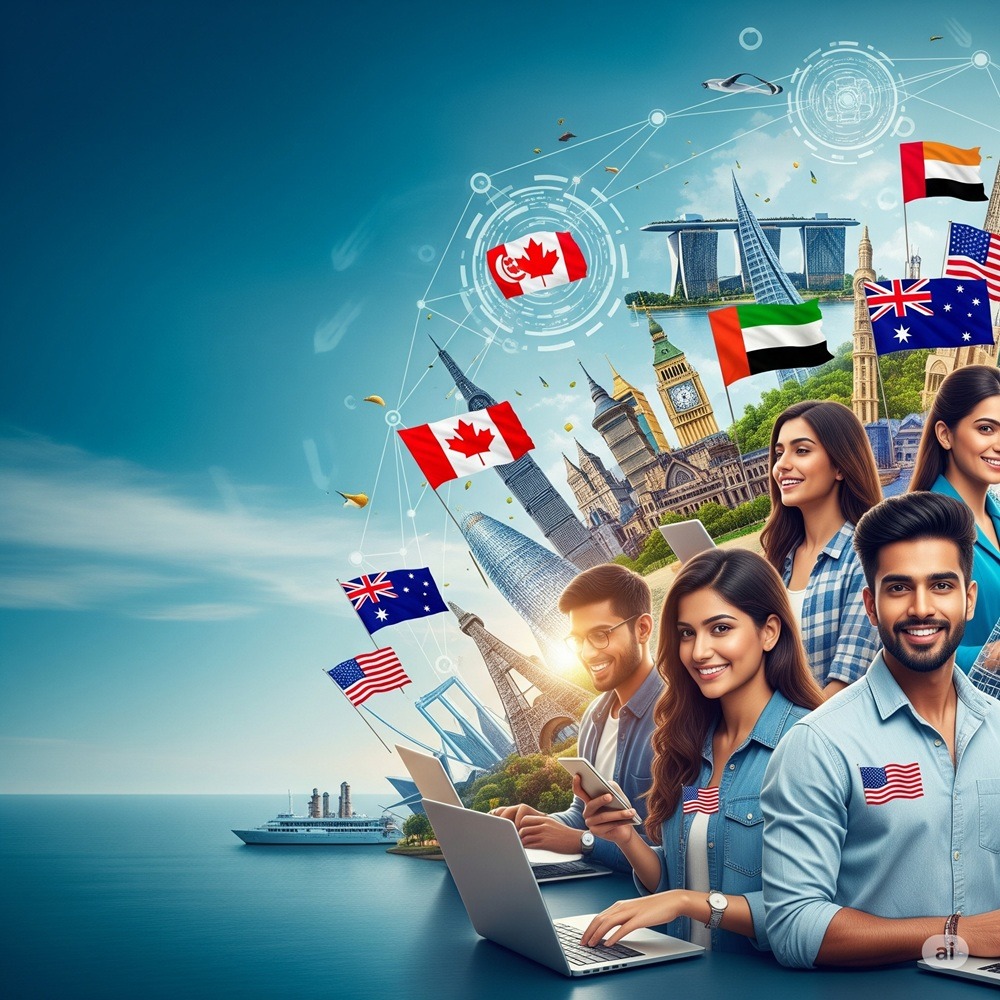The dream of working abroad excites many Indian tech professionals, with visions of lucrative salaries in Canada, the USA, the UK, and beyond. While the allure of a stronger currency is undeniable, is the grass truly greener when you factor in the actual cost of living? This post isn’t about the “how-to” of migrating, but a crucial “why-to” – a deep dive into whether that coveted international salary translates to true financial advantage.
The Magnetic Pull of Foreign Shores
For countless Indian software professionals, the thought of migrating to countries like Canada, New Zealand, the UK, USA, Australia, Dubai, or Singapore is deeply ingrained. While various factors fuel this aspiration, such as the pursuit of higher education, an enhanced quality of life, family reunification, and elevated social standing, the promise of superior financial rewards often takes center stage. The digital landscape is filled with immigration advertisements, and search engines buzz with queries on obtaining green cards and locating overseas consulates, highlighting this widespread desire for international opportunities.
The Lure of the Exchange Rate: A Mirage?
The initial attraction of overseas job opportunities often lies in the seemingly impressive salary figures when converted to Indian Rupees. For instance, a monthly income of $5,000 USD, which equated to approximately ₹4.25 lakhs in May 2025 based on the prevailing foreign exchange rates, appears significantly higher than comparable roles within India. This straightforward currency conversion naturally makes international salaries seem incredibly appealing and fuels the desire to seek employment in countries with stronger currencies like the USD, CAD, GBP, EUR, NZD, AED, or SGD. However, this initial calculation provides only a superficial understanding of the true financial implications of migration.
Unveiling the Power of PPP (Purchasing Power Parity)
The picture shifts dramatically when we consider the actual purchasing power of that foreign salary within that host country (foreign country). Money’s true value lies not in its numerical representation but in its ability to acquire goods and services in that country. As the COVID-19 pandemic starkly illustrated, a large number of money is meaningless if it cannot facilitate your needs and desires. This is where the concept of “Purchasing Power Parity” (PPP) becomes crucial. Imagine a simple scenario: your mother gives you a shopping list. The amount of money required to purchase those identical items and services in two different countries, when considered equivalent in value, reveals the PPP. For example, if your shopping list costs $1,000 in the USA and ₹22,500 in India, it implies that $1,000 holds the same purchasing power as ₹22,500 for that specific basket of goods. This establishes a real conversion rate based on what your money can actually buy.
The Indian Advantage: Rupee Goes Further
In reality, the Purchasing Power Parity between India and many developed nations reveals a significant difference in the cost of living. Data from the OECD indicates that in 2023, the PPP ratio suggested that approximately ₹24 in India could purchase what $1 could in the USA. This comes from the fact that the majority of goods and services in India are available at a considerably lower cost – often around a 70% discount – compared to countries like the United States. This means that the real value of your earnings needs to be assessed not just by the “Forex rate” but by how much your money can actually buy in your chosen destination. “Forex rates” are managed by countries and function of demand supply and printing of currency. I will write on that some other day.
The Remittance Reality: Maximizing Your Savings
The calculus changes if your primary goal for migrating is to maximize savings and eventually “return to India”. In such cases, the foreign exchange rate becomes the dominant factor when you convert your earnings back to INR. For instance, if you save $500,000 over five years while working in the USA, this amount, when repatriated to India based on the May 2025 exchange rate, could become approximately ₹4.27 crores. If the equivalent cost of the goods and services you would have consumed in the USA during those five years was ₹1.25 crores in India, then bringing your savings back allows you to purchase those same things and still retain a substantial amount. However this amount will change is Trump administration start taxing remittances outside USA. As of May 2025, 5% were being planned to be charged.
Spending Abroad vs. Saving for Home
It’s essential to differentiate between consuming your earnings in the host country and saving to remit funds back home. Money spent in the USA provides value based on the US price levels and the PPP conversion rate (e.g., $1,000 spent in the US buys roughly the equivalent of ₹24,000 worth of goods in India). However, if that same $1,000 is sent to India, it converts at the Forex rate (e.g., ₹85,000 based on May 2025 rates). Therefore, if your intention is to live and spend the majority of your earnings in the migrated country, the PPP offers a more accurate reflection of your financial well-being. Conversely, if your aim is to save aggressively and return to India, the Forex rate becomes the key determinant of your financial gains.
You can check current PPP https://www.imf.org/external/datamapper/PPPEX@WEO/UKR/EST . For India, as on May 2025, it is 20.66 Rs/USD. By dividing two countries PPP with respect to USA, you can find out relative PPP.
Beyond the Numbers: A Holistic View
While the potential for higher nominal salaries abroad is a significant draw, it’s crucial for Indian tech professionals to look beyond the enticing exchange rates. Understanding the concept of Purchasing Power Parity provides a more realistic perspective on the true financial advantages of migration. The decision to move overseas is a complex one, encompassing not just monetary gains but also quality of life, career growth prospects, personal fulfillment, and social considerations. Therefore, a thorough analysis that includes PPP alongside other crucial factors is paramount before embarking on such a life-altering journey. Make an informed choice, weighing all aspects to determine if migration truly aligns with your overall goals and aspirations.
I have published same article using world bank data. You can read that at


